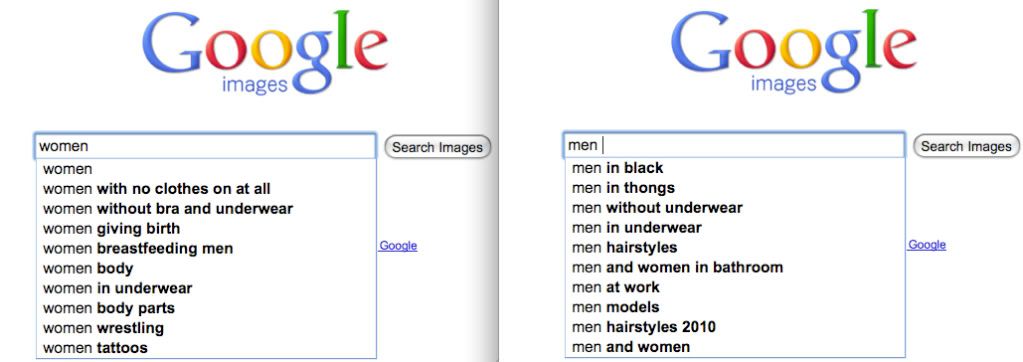The female body is used to advertise everything from beer to fishhook lines. Of the three thousand ads that Americans are bombarded with each day, many use sex to sell their “big ideas” (Hanson) (Kilbourne). Advertising agencies have forever been charged with defining femininity; women are almost always portrayed as passive, sexual, silenced, objectified, and often under-clothed beings. Teenage girls are encouraged to care primarily about their appearances; they are taught that, if they do not resemble the “ideal” woman, it is simply because “they aren’t trying hard enough” and because they need to spend time and money to try harder (Kilbourne).
Media critics have been making these accusations for decades, but a new phenomenon, one that is unavoidably terrifying, is emerging from the issue of female degradation in media: Degraded girls are getting younger.
How young is younger? Susan Anderson is a photographer in LA, California who is enveloped in the “fascinating subculture” of children’s pageants. Susan spends her time capturing children, such as this little girl, “at the height of their performance” (Susan Anderson Photography):
“Our own values of beauty, success and glamour [are] reflected in the dreams of thousands of young girls,” marvels Susan. In reality, these child pageants portray one of America’s most frightening realities to date; toddlers are taught that their bodies should be the focus of their attention. Judges search for “the complete package” and require girls to work on their beauty for hours. Is this against child labor laws (Nussbaum)? Shouldn’t zero to twelve year olds be perfecting their classroom skills and not their wardrobes?
Skipping ten to twenty years ahead, adult women who have long been subjected to this sort of education are much more responsive to advertisers’ shameless objectification of the female body.


(Shank Bone)
Although male images are usually less intimate, there are plenty of advertisements that not only attempt to objectify men, but actually try to do to men what has been done to women. This Voodoo hosiery ad tries to empower women by allowing them to strike back; a clothed, upright woman is in control of naked, crawling, animal-like men:
This next ad uses a creative “brand image” in order to teach young men that Absolut is associated with sex (Hanson):
Other ads try to portray the sexes in an equally unjust way, although they are slowly acquiring decency:
Today’s Google search of the words “women” and “men” shows that, although women are scrutinized much more intimately than men are, both genders are subject to physical pressures created by ad agencies’ “media planning”:
In order to fight the influence of sex-selling ads, real people with real issues need to make more appearances in marketing media:
This James Ferrara photograph features girls of diverse ages who have various roles in a wedding ceremony. The ad encourages girls to “just be yourselves.” If popularized, this type of media can be an effective defense against child pageant promotion:
Other References
1) Hanson, Ralph E. Mass Communication. Washington: CQ Press, 2008.
2) Kilbourne, Jean. Killing Us Softly. 21 May 2009. http://www.youtube.com /watch?v=svpMan9cWyo.
3) Nussbaum, Kareen. Children and Beauty Pageants. http://www.minorcon.org/pageants.html.
4) Susan Anderson Photography. Susan Anderson. 2009. http://www.highglitz.com/bio.html.







There's this show on TLC called "Toddlers and Tiaras." It is really sad, but extremely funny at the same time. These girls, as young as 4, prance around in their little dresses, big hairdos and yes, fake teeth in order to impress the judges. They are worrying about their weight, and appearances while they should be worried about what they are going to eat for snack, or what TV show to watch first.
ReplyDeleteI find it very interesting how you decided to google "men" and "women" and see what the results were. There was not even one work-related result for the women, women models didn't even show up.